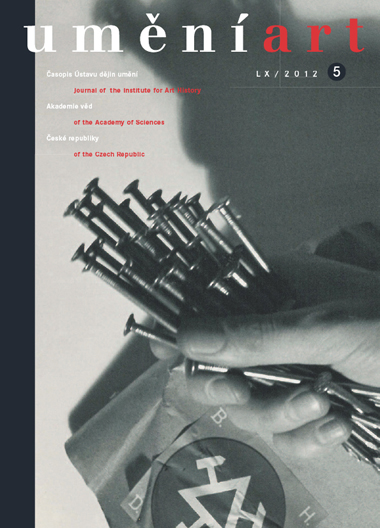Mariana Holá
Fascinován průmyslem. Fotografické práce Vladimíra Hipmana ze třicátých až padesátých let 20. století
This study focuses on the photography of Vladimír Hipman (1908-1976), of which to date there has been only somewhat superficial knowledge. Hipman, an architect by training, but who worked also in graphic design and exhibition management, did his most important photographic work on the subjects of industrial and physical labour. He began collaborating with the Mining and Metallurgy Company (Báňská a hutní společnost) in 1934 and in the ensuing decades took hundreds of photographs on the sites of the company's different plants and workplaces. These images are representative of the strong New Objectivity and Constructivist movements. Hipman's pre-war work culminated in an independent exhibition titled 'Steel in Photography' (Ocel ve fotografii) in 1938 at the Museum of Decorative Arts in Prague, in which there are already signs of his experimenting with narrative arrangements of the photographs. This is something he later applied in his seminal book Práce je živá (Work Is Alive; 1945), which sums up the characteristic attributes of pre-war photography, while also charting some of the new directions in which the field would set off in the 1950s. A restrained modernity and a realistic approach to portraiture characterise the photographs published in the book, and these qualities are clearly why Hipman's work was well received in the late 1940s and early 1950s, as was the fact that he himself was regarded as the father of Socialist Realist industrial photography. The strong position Hipman occupied in the 1950s allowed him to intensify his theoretical work. A fundamental book is his Fotografie v těžkém průmyslu (Photography in Heavy Industry; 1952), in which at first glance he seems to turn abruptly away from pre-war avant-garde photography, but a closer examination shows he is trying to subtly justify some of the qualities of modern photographs and incorporate them into the new context of Social Realist photography and its ideological demands. Hipman's own photography at that time was only marginally Socialist Realist, concentrating particularly on industry, which was a common contemporary theme.
Full-text in the Digital Library of the Czech Academy of Sciences:
https://kramerius.lib.cas.cz/uuid/uuid:2e594dfc-4194-7830-805c-76b2600e11f0
< back

